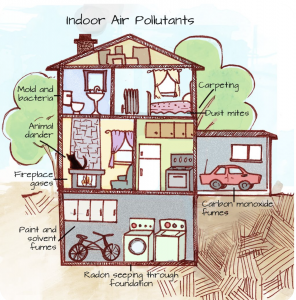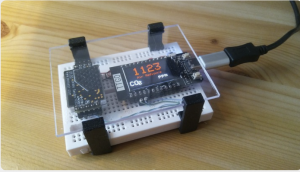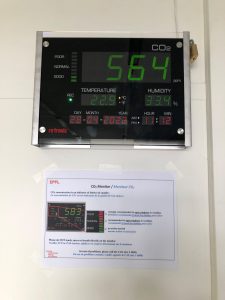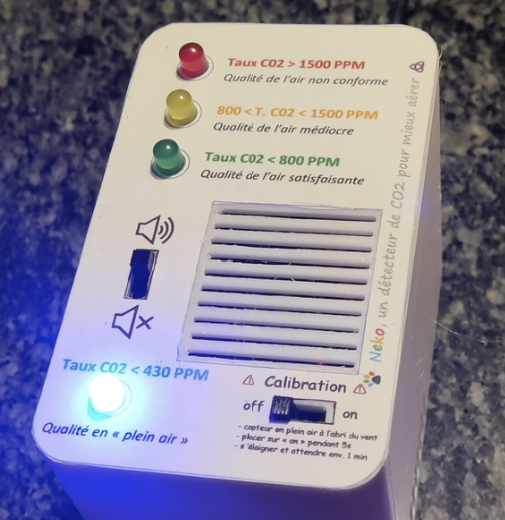Have you ever noticed the time you spend indoor?

In fact, according to the US Environmental Protection Agency (EPA), Americans spend 87% of their life in buildings[1]. And this data is from 1989, so one may conclude it has increased since.
It means that someone that is 80 years old will have spent 70 years in a building. This rule of thumb can be generalised to any developed country. Consequently, it is of the utmost importance to be able to breath good quality air in buildings, and people need to be able to always monitor their surrounding air quality.
Risk of sick building syndrom
Indeed, several illnesses can be caught from living in a house where air quality is mediocre. These conditions are known as a Sick Building Syndrom (SBS).
It means that you may feel sick while you dwell inside your house, or that you develop chronic health disorders because of the bad quality of your housing [2].
Those Sick Building Symptoms can be caused by a multitude of factors, but most of them are linked to the quality of air you breath.

Let’s say you have a nice Golden Retriever you can play with in your garden. Its long hair can host a lot of dust and bacteria that you breath directly when you are in the same room as your dog.
You may have built your house on a uranium rich soil, which means Radon, a highly toxic noble gas, may enter the basement of your house and then contaminate you.
In a more mundane way, the most important threat most people may encounter in their home is moisture, which allows mold to grow and to emit in the air bacteria and spores, which can turn people in the household sick.
Now, all these threats are direct: having the air filled with dust and bacteria is directly a threat to health. Yet it is also very important to monitor the proportion of undirect air pollutants, such as ozone, which can react with normally safe chemicals and produce highly toxic and volatile products, even with a very low concentration of ozone[3].
Productivity concerns
Since ozone can be produced by printers, which can be found in great numbers in offices, so air pollution by ozone is something particularly relevant to workplaces.
In fact, air quality, as a whole, is something to be reckoned with by businesses, as it has a direct impact on productivity: studies show that having a good air quality in offices could increase the productivity of employees by at least 6%[4].
So now you know why you should have a good air quality in your home and in your office. Yet, you may still be wondering how to monitor it.
I have good news for you: you don’t need to mortgage your house to be able to afford an air sensor.
Build your own low-cost air sensor
In fact, driven by the Covid pandemics, several low-cost CO2 sensors have been developed to monitor the concentration of carbon dioxide, which is linked to the concentration of Covid inside microdroplet in the air.
You can get yours, or even build yours by following the simple instructions on this website for less than $50, and it would be precise with an error range of plus or minus 30 ppm. It could be a great ally to fight upcoming pandemics without having to shut down the entire economy. One could imagine keeping an office running as long as the CO2 concentration inside is kept under a threshold of let’s say 1000 ppm with the help of ventilation.
for less than $50, and it would be precise with an error range of plus or minus 30 ppm. It could be a great ally to fight upcoming pandemics without having to shut down the entire economy. One could imagine keeping an office running as long as the CO2 concentration inside is kept under a threshold of let’s say 1000 ppm with the help of ventilation.
As a matter of fact, even one of the most prestigious universities in the world, the EPFL, has decided to equip several of its classrooms with CO2 monitors to allow professors and students to feel safe with Covid and act accordingly if they notice that the CO2 concentration is too high.

The future democratization of low-cost air sensor
But, as the title of my blog post probably spoiled it to you, low-cost sensing of indoor air quality might be the future.
It might be the future because it is cheap, installing a CO2 or an ozone monitor costs less than $100, which is at least 5 times lower than replacing a window in your house, and it could significantly improve people’s health and productivity.
Just like there is already carbon monoxide sensors in almost every house nowadays, as a safety measure, one could imagine adding this kind of sensors to detect ozone or radon.
Furthermore, air quality sensor could be integrated in home automation: if the CO2 concentration is too high, the windows could be opened of the air filtering unit activated to lower the amount of air pollution inside the house.

In a more general perspective, this is a future because, as more and more people work indoor, even in developing countries, our health systems will not be able to cure everyone suffering from diseases they would get from their building, and, as overpopulation is looming[5], we need to maximize productivity to ensure that everyone produces the maximum amount of wealth they can.
References:
[1] U.S. Environmental Protection Agency. 1989. Report to Congress on indoor air quality: Volume 2. EPA/400/1-89/001C. Washington, DC. (PDF). World Health Organization. n.d[2] “Sick Building Syndrome”(PDF). World Health Organization. n.d.
[3] Y. Liu, P.K. Misztal, C. Arata, C.J. Weschler, W.W. Nazaroff, A.H. Goldstein,
Observing ozone chemistry in an occupied residence, Proc. Natl. Acad. Sci. Unit.
States Am. 118 (6) (2021), e2018140118, https://doi.org/10.1073/
pnas.2018140118.
[4] Wyon DP. The effects of indoor air quality on performance and productivity. Indoor air. 2004 ;14 Suppl 7:92-101. DOI: 10.1111/j.1600-0668.2004.00278.x. PMID: 15330777.
[5] “World Population Prospects 2019”. United Nations, Dept of Economic and Social Affairs. 2019.

